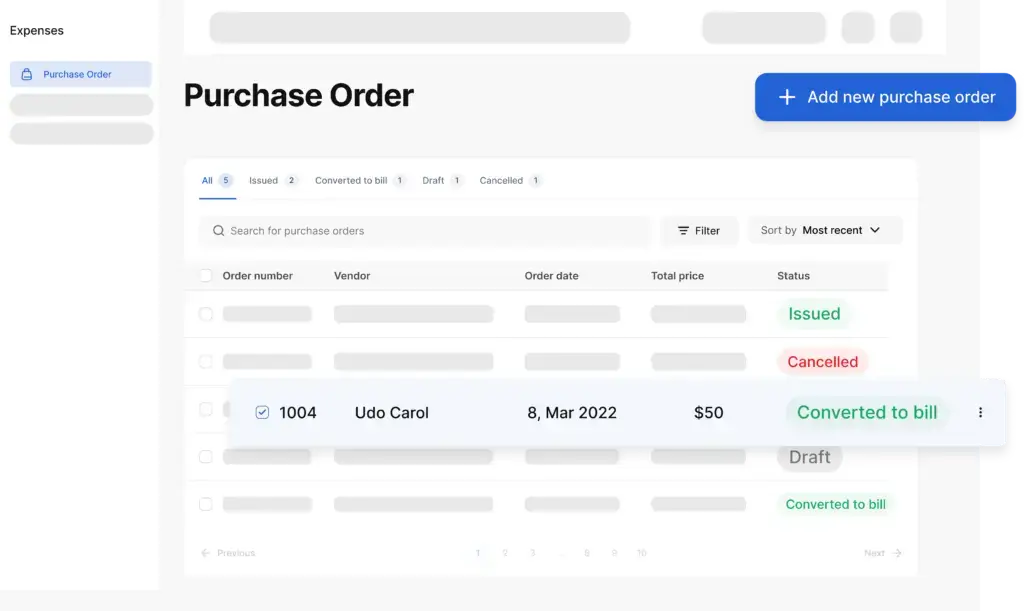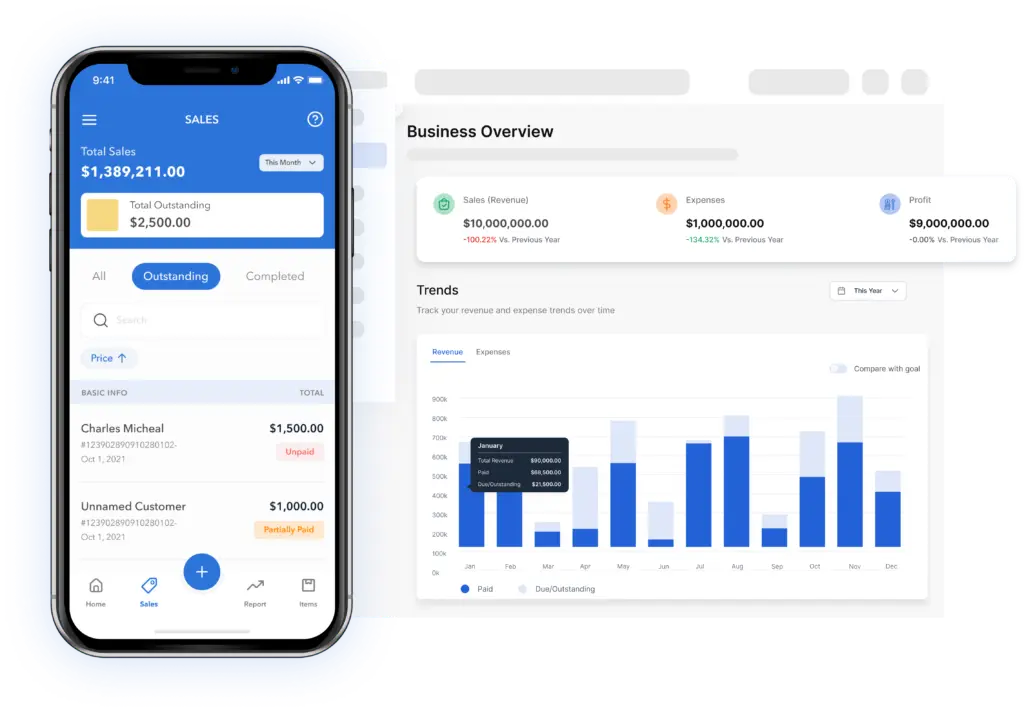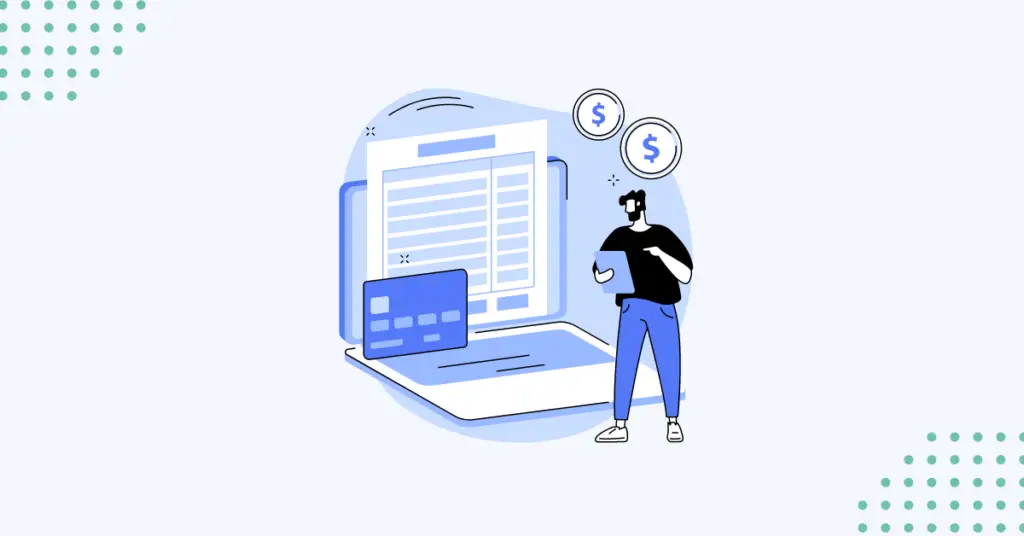Two essential documents play distinct roles in business transactions: the Purchase Order and the Invoice. These documents are pivotal for smooth operations, transparent communication, and accurate financial records. In this comprehensive guide, we’ll unravel the differences between Purchase Orders and Invoices, explain their roles, and provide insights into creating them effectively.
Whether you’re a seasoned entrepreneur or a newcomer to the business arena, grasping the significance of these documents is essential for effective business management.
The Difference between a Purchase Order and an Invoice
Before delving into the specifics, let’s highlight the fundamental difference between a Purchase Order (PO) and an Invoice. A Purchase Order is a document a buyer issues to a supplier outlining the products or services they intend to purchase. On the other hand, an Invoice is a request for payment sent by the seller to the buyer for the goods or services provided. While both documents play roles in the procurement process, they serve distinct purposes at different transaction stages.
Purchase Order Explained: What is a Purchase Order?
A Purchase Order (PO) is a written authorization issued by a buyer to a seller detailing the products or services the buyer wishes to purchase. It is a formal request to the supplier outlining the required quantity, price, and description of the items or services. Purchase Orders are crucial for maintaining clear communication between buyers and suppliers and ensuring that both parties are on the same page regarding the transaction terms.

When a buyer generates a Purchase Order, it serves as a commitment to purchase but does not represent a financial obligation to the seller. Instead, it initiates the procurement process and provides the supplier with the necessary information to fulfill the order. Purchase Orders are used to track inventory, manage stock levels, and ensure that the right products are delivered on time.
To illustrate, imagine you own a boutique clothing store and need to restock your inventory. You generate a Purchase Order detailing the quantity, sizes, and styles of garments you need from your supplier. This document communicates your requirements and serves as a reference point for both parties to avoid misunderstandings.
Invoice Explained: What is an Invoice?
An Invoice is a document issued by a seller to a buyer requesting payment for goods delivered or services rendered. It includes detailed product or service information, agreed-upon prices, payment terms, and applicable taxes or discounts. The Invoice acts as a formal demand for payment, indicating the total amount the buyer owes to the seller.
Unlike a Purchase Order, an Invoice represents a financial obligation on the part of the buyer. It signals the completion of a transaction and provides the buyer with a clear record of the goods or services received and the associated costs. Invoices play a vital role in a business’s financial record-keeping, as they document revenue generated from sales and the timeline for payment collection.
Suppose you’re the supplier in the scenario mentioned earlier. Once you’ve shipped the requested garments to the boutique owner, you’ll create an Invoice detailing the cost of each item, any additional charges, and the total amount owed. This Invoice acts as a record of the transaction, ensuring both parties are aware of the financial commitment.
Related post: Sales order vs. Invoice
How to Create a Purchase Order
Creating a Purchase Order involves several key steps:
- Supplier Selection: Choose the supplier from whom you intend to purchase goods or services.
- Item Details: Specify the items or services you wish to order, including descriptions, quantities, and unit prices.
- Quantities: Indicate the quantities of each item you need.
- Delivery Address: Provide the delivery address to which to send the items.
- Terms and Conditions: Outline any terms and conditions related to the order, such as delivery dates, payment terms, and warranties.
- Review and Send: Double-check the details and send the Purchase Order to the supplier.
You can use our free purchase order generator to create a purchase order
How to Create an Invoice
Crafting an Invoice involves the following steps:
- Customer Information: Include the buyer’s name, contact details, and billing address.
- Invoice Details: Include a unique invoice number, invoice date, and payment due date.
- Product/Service Description: List the products or services provided, their quantities, and prices.
- Subtotal and Total: Calculate the subtotal, applying discounts or additional charges. Then, calculate the total amount owed.
- Payment Instructions: Provide clear instructions on how the buyer can make payment, including accepted payment methods.
- Terms and Conditions: Include any terms and conditions related to payment, late fees, or returns.
- Review and Send: Verify the accuracy of the information and send the Invoice to the buyer.
Vencru: The Invoice and Purchase Order Creator

In the dynamic world of business, leveraging technology can streamline your operations. Vencru, a comprehensive business management software, offers a user-friendly platform for creating both Purchase Orders and Invoices seamlessly. With Vencru, you can:
- Generate Purchase Orders with ease, ensuring accurate communication with suppliers.
- Create professional Invoices that clearly outline payment details for your customers.
- Customize templates to align with your brand identity and business preferences.
- Maintain a digital record of your transactions, enhancing record-keeping and organization.
- Conclusion
Understanding the roles of Purchase Orders and Invoices is fundamental to effective business management. A Purchase Order initiates the procurement process, detailing the buyer’s requirements, while an Invoice formalizes the payment process, requesting payment for goods or services provided. By mastering the creation and utilization of these documents, you can enhance communication with suppliers and customers, maintain transparent financial records, and contribute to overall efficiency.






